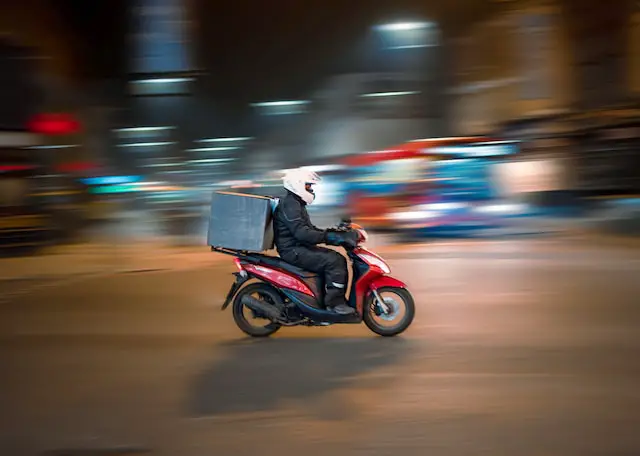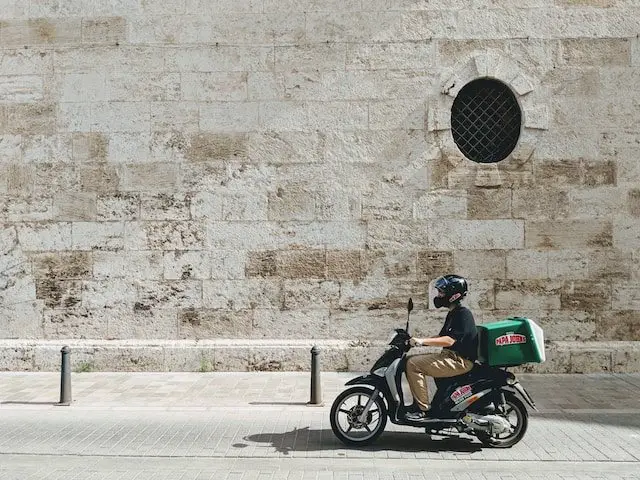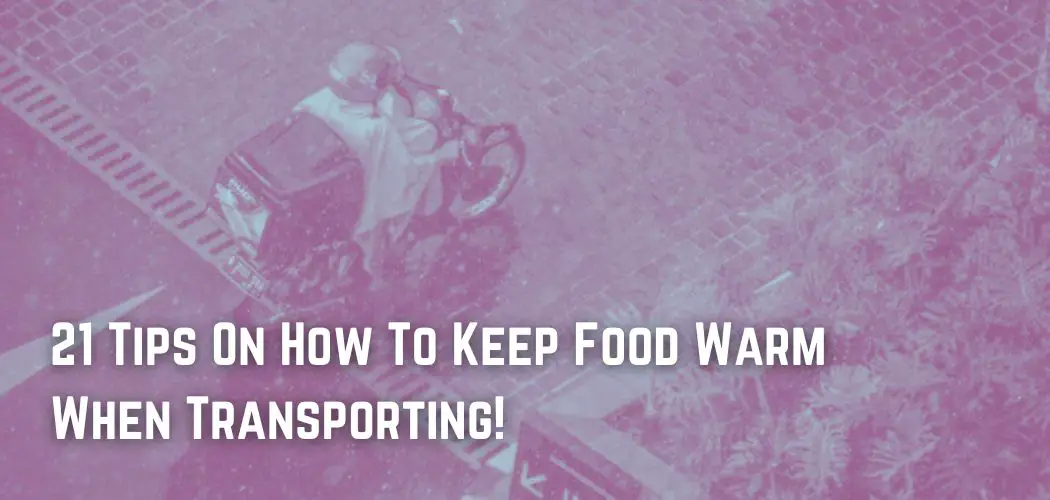When it comes to transporting food, keeping it warm is crucial to maintaining its quality and safety. Whether you’re taking a dish to a potluck, catering an event, or just bringing leftovers to a friend’s house, these 21 tips will help you keep your food warm and delicious.
Contents
- 0.1 Preheat The Container
- 0.2 Use Insulated Containers
- 0.3 Wrap Dishes In Foil
- 0.4 Use A Heating Pad
- 0.5 Use Hot Packs
- 0.6 Pack Food Tightly
- 0.7 Use A Tight-Fitting Lid
- 0.8 Preheat The Oven
- 0.9 Use A Slow Cooker
- 0.10 Use A Warming Tray
- 0.11 Use Insulated Food Containers
- 0.12 Use A Portable Oven
- 0.13 Don’t Open The Container
- 0.14 Use Towels Or Blankets
- 0.15 Use A Hot Water Bath
- 0.16 Use A Microwave
- 0.17 Insulated Thermos
- 0.18 Use A Heating Lamp
- 0.19 Use A Chafing Dish
- 0.20 Crockpot
- 0.21 Portable Food Warmer
- 1 Is It Important To Keep Food Warm?
- 2 Conclusion
Preheat The Container
Preheating the container before placing the food inside can help keep the food warm for a longer time. Simply fill the container with hot water and let it sit for a few minutes before pouring out the water and adding the food.
Use Insulated Containers
Insulated containers are designed to maintain the temperature of the food for an extended period. These containers can keep food warm for several hours, depending on the quality of the container. Make sure to choose the right size container depending on the quantity of food.
Wrap Dishes In Foil
Wrapping dishes in foil can help in keeping them warm while transporting, particularly for short distances. Aluminum foil is a good conductor of heat and can help to trap heat in the food, preventing it from cooling down quickly.
To use foil to keep food warm while transporting, simply wrap the dish tightly in several layers of foil, making sure that it’s completely covered.
The more layers of foil you use, the better the insulation will be. The foil will help to keep the heat inside the dish, which will help to maintain its temperature while it’s being transported.
One of the benefits of using foil to keep food warm is that it’s a low-cost, simple option that can be used with a variety of food types and serving dishes. Additionally, it’s easy to find and doesn’t require any special equipment or set up.
Use A Heating Pad
heating pads can be used to keep food warm during transportation, particularly for short distances. Heating pads are designed to generate and maintain heat, and they can be easily applied to the bottom of a container or serving dish to help keep the food warm.
To use a heating pad to keep food warm while transporting, first select an appropriate heating pad for the size and shape of the container or dish you’ll be using.

Then, turn on the heating pad and place it on a flat, stable surface. Next, place the container or dish on top of the heating pad, making sure that the pad is securely attached to the bottom of the container or dish.
The heat generated by the heating pad will then be transferred to the food, helping to maintain a safe temperature range and prevent the food from cooling down. It’s important to monitor the temperature of the food regularly to ensure that it remains at a safe temperature range.
Use Hot Packs
Hot packs can be heated in the microwave or oven and placed in the container with the food. These packs can help keep the food warm for a few hours, depending on the quality of the pack.
Pack Food Tightly
Packing the food tightly in the container can help prevent heat from escaping. The more space there is in the container, the more air there will be, and the more heat will be lost.
Use A Tight-Fitting Lid
Make sure your container has a tight-fitting lid to prevent heat from escaping.
Preheat The Oven
If you are transporting hot food from the oven, preheat the container in the oven for a few minutes before adding the food. This will help the container retain heat and keep the food warm for a longer time.
Use A Slow Cooker
Slow cookers are great for keeping food warm during transportation. Plug it in at your destination, and your food will stay warm. Slow cookers can keep food warm for several hours.
Use A Warming Tray
Warming trays are designed to keep food warm and are perfect for large events.
Use Insulated Food Containers
Insulated food containers are a great way to keep hot food warm during transportation. These containers can be found at most kitchen supply stores.
Use A Portable Oven
Portable ovens are perfect for keeping food warm during transportation. They plug into a standard outlet and can be used in your car or at your destination.
Don’t Open The Container
Try not to open your container during transportation to prevent heat from escaping.
Use Towels Or Blankets
Towels or blankets can be used as an additional layer of insulation to help keep food warm during transportation.
However, they are not the most effective or reliable method for keeping food warm, and should only be used in conjunction with other methods such as thermal bags, heating pads, or hot water baths.

To use towels or blankets to keep food warm while transporting, wrap the container or serving dish in a thick layer of towels or blankets.
The towels or blankets will help to retain the heat of the food and prevent it from cooling down. However, it’s important to monitor the temperature of the food regularly to ensure that it remains at a safe temperature range.
Use A Hot Water Bath
A hot water bath is a method of keeping food warm during transportation that involves placing the food container inside a larger container filled with hot water. This technique is often used for dishes that are served in a larger serving dish, such as casseroles or stews.
To use a hot water bath to keep food warm while transporting, simply place the food container inside a larger container, such as a roasting pan or baking dish.
Then, fill the larger container with hot water, making sure that the water level is high enough to come at least halfway up the sides of the food container. The hot water will then transfer heat to the food container, keeping the food warm while it’s being transported.
One of the benefits of using a hot water bath to keep food warm is that it’s a low-tech, low-cost method that doesn’t require any special equipment. Additionally, it can be used with a variety of food containers, making it a versatile option.
Use A Microwave
A microwave can be used to help keep food warm during transportation, but it’s important to note that it’s not the most effective method for long-term heat retention. However, it can be useful for short-term warming or for situations where access to other methods is limited.
To use a microwave to keep food warm while transporting, simply heat the food in the microwave until it’s hot and then place it in a covered container. The heat from the food will then be retained inside the container, helping to keep it warm while it’s being transported.
It’s important to note that while a microwave can be useful for short-term warming, it’s not recommended to use it as a long-term method for keeping food warm.
Over time, the heat will dissipate, and the food will cool down. Additionally, using a microwave can also affect the texture and taste of some foods, particularly if they are overcooked or reheated multiple times.
Overall, a microwave can be a useful option for short-term warming or for situations where access to other methods is limited.
However, it’s important to consider the limitations and to choose the appropriate method based on the amount of food being transported and the specific travel circumstances.
Insulated Thermos
An insulated thermos can keep food warm during transportation. An insulated thermos is a container that is designed to keep food or beverages hot or cold for an extended period.
It typically consists of a double-walled container with insulation between the two layers, which helps to maintain the temperature of the contents.
To use an insulated thermos to keep food warm while transporting, simply fill the thermos with hot food, such as soup, stew, or chili, and then securely seal the lid. The insulation will then keep the heat inside, allowing the food to remain hot for several hours.
Insulated thermoses are available in a variety of sizes and designs, from small individual-sized thermoses to larger thermoses that can hold multiple servings.

They are ideal for transporting small amounts of food, such as a single serving, and are commonly used for picnics, work lunches, or when traveling by car.
One of the benefits of using an insulated thermos to keep food warm is that it doesn’t require access to electricity, which makes it a convenient option for outdoor activities or situations where electricity is not available.
However, it’s important to note that insulated thermoses have some limitations. They may not be suitable for transporting large quantities of food, and the food may cool down more quickly if the thermos is not completely full.
Additionally, it’s important to ensure that the food is heated to a safe temperature before being placed in the thermos, as the insulation can’t compensate for food that hasn’t been heated properly.
Use A Heating Lamp
Heating lamps are a popular method for keeping food warm during transportation in restaurants, buffets, and other food service settings.
The lamps work by providing a source of heat that is directed towards the food, helping to maintain a safe temperature range and prevent the food from cooling down.
To use heating lamps to keep food warm while transporting, simply set up the lamps in a location where they can be directed towards the food, such as on a table or buffet line.
The lamps should be positioned at a safe distance from the food to prevent overcooking or burning. The heat from the lamps will then keep the food warm while it’s being transported.
One of the benefits of using heating lamps to keep food warm is that they are a convenient option that can be used with a variety of food types and serving dishes. Additionally, they don’t require any special equipment or set up, making them an easy option to use.
Use A Chafing Dish
A chafing dish is a type of portable warming tray that is commonly used for buffets, catered events, and other situations where large quantities of food need to be kept warm and served at a consistent temperature.
To use a chafing dish to keep food warm while transporting, first select an appropriate size chafing dish for the amount of food you need to transport.
Next, fill the dish with hot water and place the food containers or serving dishes inside the chafing dish. Then, light the fuel source underneath the chafing dish, which will heat the water and keep the food warm.
One of the benefits of using a chafing dish to keep food warm during transportation is that it can be easily transported and set up at the destination.
Additionally, chafing dishes can provide a consistent heat source that can keep the food at a safe temperature range for an extended period of time.
Crockpot
A crockpot, also known as a slow cooker, is an electrical kitchen appliance used to cook food at a low temperature for an extended period.
It consists of a ceramic or metal pot that sits inside an outer metal casing. The pot is filled with food and a liquid, and then the unit is turned on, allowing the food to cook slowly over several hours.
Crockpots are popular for their convenience and versatility. They are ideal for preparing stews, soups, casseroles, and other slow-cooking dishes. In addition, many crockpots have a “keep warm” setting that allows the food to remain at a safe temperature after it has finished cooking.
When it comes to transporting food, a crockpot can help keep food warm during transportation. After the food has finished cooking, simply unplug the crockpot and place the lid securely on the pot. The pot will retain its heat, keeping the food warm during transportation.
When you arrive at your destination, simply plug the crockpot back in and use the “keep warm” setting to maintain the temperature of the food.
This method is ideal for transporting large quantities of food and is especially useful for potluck dinners, family gatherings, and other events where you need to transport hot food.
Portable Food Warmer
A portable food warmer can keep food warm during transportation. A portable food warmer is a small, portable device that uses electricity to keep food warm.
It typically consists of a heating element and a container for holding the food.To use a portable food warmer, simply plug it in and place the food container on the heating element. The device will then use heat to keep the food warm while you travel.
Portable food warmers are available in a variety of sizes and designs, from small, individual-sized warmers to larger warmers that can hold multiple dishes at once.
They are ideal for transporting small amounts of food, such as a single serving or a small dish, and are commonly used for picnics, camping trips, or when traveling by car. However, it’s important to note that portable food warmers have some limitations.
They may not be suitable for transporting large quantities of food, and they may not be as effective in maintaining a safe temperature range for extended periods as some other methods, such as insulated containers or slow cookers.
Additionally, portable food warmers require access to electricity, which may not be available in all situations.
Overall, a portable food warmer can be a useful option for keeping small amounts of food warm during transportation, but it’s important to consider the limitations and to choose the appropriate method based on the amount of food being transported and the specific travel circumstances.
Whether you’re catering an event or just taking leftovers to a friend’s house, keeping your food warm is key to maintaining its quality and safety.
Is It Important To Keep Food Warm?
Yes, it is important to keep certain types of food warm to prevent the growth of harmful bacteria. When food is kept warm, it stays at a safe temperature range that prevents bacteria from multiplying.
Bacteria thrive in warm temperatures between 40°F (4°C) and 140°F (60°C), known as the “danger zone.”
If food is not kept at a safe temperature, harmful bacteria can grow, which can cause foodborne illnesses such as salmonella, E. coli, and listeria. These illnesses can cause symptoms such as nausea, vomiting, diarrhea, and in severe cases, hospitalization or even death.
Therefore, it’s important to keep hot food hot and cold food cold to prevent the growth of bacteria and reduce the risk of foodborne illnesses.
Conclusion
Keeping food warm during transportation is important to ensure food safety and maintain the quality and taste of the food. There are many methods available to keep food warm while transporting, including thermal bags, heating pads, hot water baths, chafing dishes, and more.
Each method has its own advantages and limitations, and the choice of method will depend on factors such as the amount of food being transported, the distance of travel, and the specific travel circumstances.
By following the tips and guidelines provided, you can safely and effectively keep your food warm and delicious while on the go.

